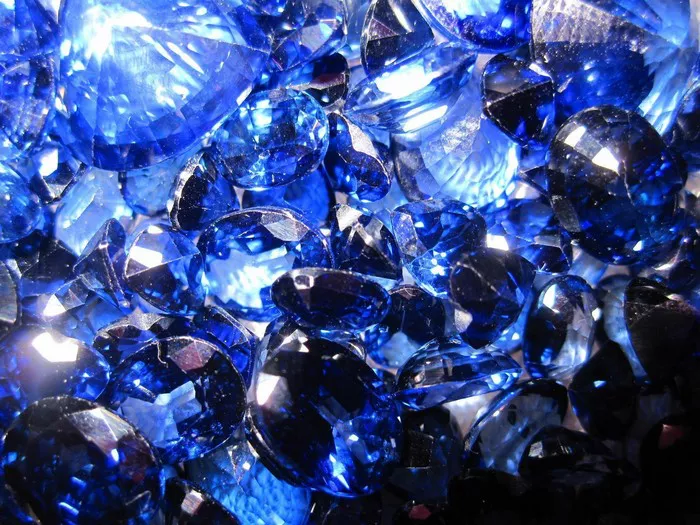Padparadscha sapphire is a rare and exquisite gemstone prized for its unique blend of pink and orange hues. The name “padparadscha” is derived from the Sinhalese word for “lotus blossom,” a fitting description for the gem’s delicate and captivating coloration. In this article, we’ll explore the meaning of padparadscha sapphire, its characteristics, significance, and cultural associations.
Understanding Padparadscha Sapphire
Padparadscha sapphire is a variety of corundum, the same mineral that forms rubies and sapphires. What sets padparadscha sapphire apart is its distinctive color, which combines shades of pink and orange to create a soft, peachy-pink hue reminiscent of a tropical sunset. This unique coloration is caused by the presence of trace elements such as chromium, iron, and vanadium within the crystal structure of the sapphire.
Padparadscha sapphires are highly prized for their rarity, beauty, and elegance. They are often regarded as one of the most valuable and sought-after varieties of sapphire, commanding premium prices in the gemstone market. The finest padparadscha sapphires exhibit a delicate balance of pink and orange hues, with excellent clarity and transparency, making them prized collector’s items and cherished heirlooms.
Characteristics of Padparadscha Sapphire
Padparadscha sapphires exhibit a range of colors, from pale salmon pink to vivid orange-pink, with variations in saturation, tone, and hue. The most desirable padparadscha sapphires display a vibrant, evenly distributed coloration that evokes the beauty of a lotus flower in full bloom. These gemstones are often cut into faceted shapes such as oval, cushion, and pear, to maximize their brilliance and showcase their unique coloration.
In addition to their stunning color, padparadscha sapphires are prized for their exceptional clarity, transparency, and brilliance. High-quality padparadscha sapphires are free from visible inclusions and exhibit a lively sparkle that captivates the eye. The gemstone’s clarity and transparency allow light to pass through unimpeded, enhancing its beauty and allure.
Padparadscha sapphires are typically found in limited quantities and are primarily sourced from regions such as Sri Lanka (formerly known as Ceylon), Madagascar, Tanzania, and East Africa. Sri Lankan padparadscha sapphires, in particular, are highly regarded for their exceptional color and clarity, often commanding premium prices in the market.
Padparadscha Sapphire Meaning
The significance of padparadscha sapphire extends beyond its rarity and beauty, with cultural and symbolic associations that add to its allure. In many cultures, padparadscha sapphire is associated with love, harmony, and compassion, making it a popular choice for engagement rings and romantic jewelry.
The delicate pink and orange hues of padparadscha sapphire are often likened to the colors of a tropical sunset, evoking feelings of warmth, serenity, and romance. This symbolism makes padparadscha sapphire an ideal choice for celebrating love and commitment, whether in an engagement ring, wedding band, or anniversary gift.
In addition to its associations with love and romance, padparadscha sapphire is also believed to possess healing and metaphysical properties. In some spiritual traditions, padparadscha sapphire is thought to promote balance, harmony, and emotional well-being, making it a sought-after gemstone for meditation, energy healing, and spiritual practices.
Cultural Associations of Padparadscha Sapphire
Padparadscha sapphire holds special significance in various cultures and traditions around the world. In Sri Lanka, where the gemstone was first discovered, padparadscha sapphire is revered as a symbol of prosperity, happiness, and divine blessings. It is often associated with the lotus flower, a sacred symbol of purity, enlightenment, and spiritual awakening in Buddhist and Hindu traditions.
In Japan, padparadscha sapphire is known as “hanami sapphire,” a reference to the Japanese custom of hanami, or cherry blossom viewing. The gemstone’s soft pink and orange hues are reminiscent of cherry blossoms in bloom, symbolizing the fleeting beauty and ephemeral nature of life.
In Western cultures, padparadscha sapphire is celebrated for its rarity and elegance, often gracing the pages of high-end jewelry catalogs and adorning the fingers of celebrities and royalty. Its subtle yet striking coloration makes it a versatile choice for both contemporary and vintage-inspired jewelry designs, from classic solitaire rings to intricate halo settings.
Conclusion
In conclusion, padparadscha sapphire is a rare and exquisite gemstone prized for its unique blend of pink and orange hues, symbolizing love, harmony, and beauty. Its delicate coloration evokes the beauty of a lotus flower in full bloom, inspiring feelings of warmth, serenity, and romance. With its exceptional rarity and cultural significance, padparadscha sapphire continues to captivate collectors, connoisseurs, and jewelry enthusiasts around the world, making it a cherished and timeless addition to any gemstone collection.


